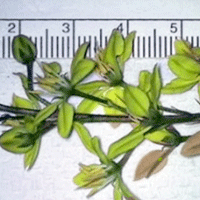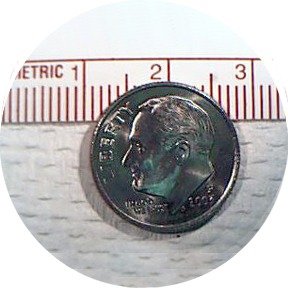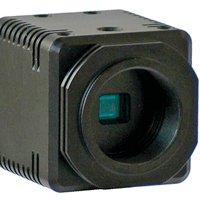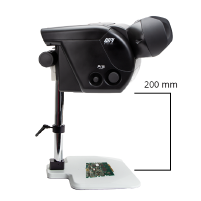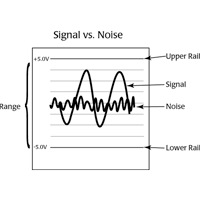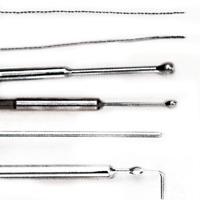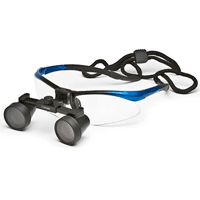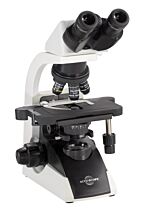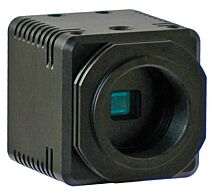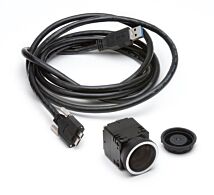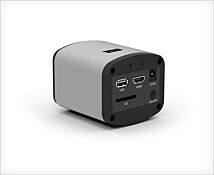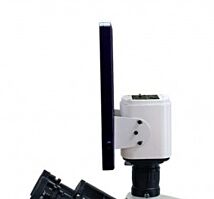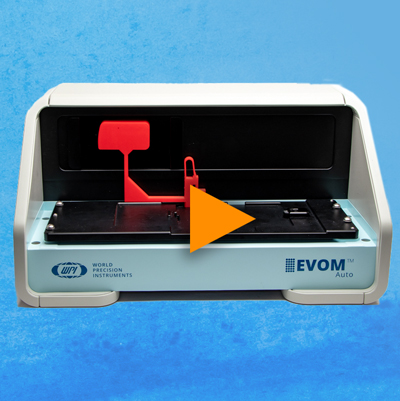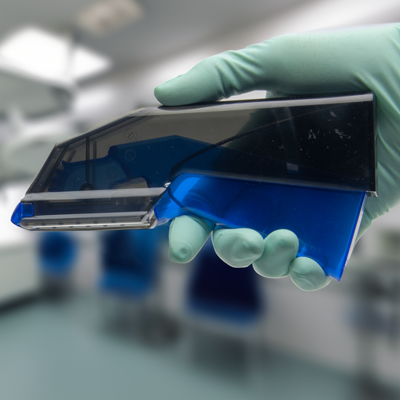This website uses cookies to ensure you get the best experience on our website.
Read more
Choosing a Microscope Camera
April 29, 2013
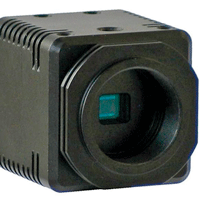
Types
It is common for a researcher to attach a camera to a microscope. Three types of cameras are available, and two are suitable for microscopy work:
- Television (Direct video)
- 4:3 old style video, NTSC, PAL, 480i
- 16:9 HDTV (DVI 1.0 compliant), 720P
- Computer capture
- USB connection
- Firewire connection
- Commercial cameras
- Fixed lens cameras
- SLR cameras
First, determine what you want to do:
- Capture images
- View live video
The cameras that do both are more expensive. Lower cost options capable of live view and image capture usually are capable of capturing fewer frames per second.
Television Style Cameras
Television style cameras send live video images to a television set. They can use the old 4:3 (boxy) format or the new 16:9 cinematic format. These cameras do not come with software, nor do they connect to a computer without adding a special interface to the computer. This image can be recorded by DVRs or by adding a video input and capture card to your computer. These cameras can record video, and some computer software can be added to capture images. However, the cameras offer low resolution, the computer interfaces can be expensive, and a computer must be designed and purchased for this purpose.
Computer Cameras
These cameras are usually designed to plug directly into a standard computer interface (USB, firewire). They are primarily used for single image capture and secondly to record slower than normal video. The term that is used here is frames per second. Normal video is on the order of 30 frames per second, cinematic projection film at the movies may be 14 to 18 frames per second. USB cameras can range from 7.5 to 15 frames per second. The playback on these is usually smooth (not jerky), and the viewing time is not enhanced (speeded up). The frame rate on these cameras is limited by the computer that is receiving the signal. A slow CPU, low memory or and overloaded computer will have difficulty capturing video at this rate.
Commercial Cameras
Commercial cameras cannot be optically connected to a microscope without additional optics. The optics adapters are expensive, and the results are usually poor. SLR cameras can be connected optically to microscopes by using the SLR adaptors that are available on most microscopes.
Camera sizes
The cameras are designated by the size of their sensor chip (CCD) that records image data. The bigger the sensor chip, the higher the resolution of the camera. The size designation roughly correlates with the size of the image sensor, but it is more of a name than a measurement. Common sizes include:
- ½" (8mm diagonal)
- 1/3" (6mm diagonal)
- ¼" (4.6mm diagonal)
Field of View
The cameras usually require an adapter to connect with the microscope. This is called a C-mount. The camera image size and the required optical camera component (C-mount) are important in capturing the desired image. Some researchers want the capture field of view to match the visual field seen in the eyepieces, and others do not mind a capture image less than the visual field. There are special objective/eyepiece configurations on the trinocular microscopes to capture a 1:1 configuration, but generally the captured field is less than what is seen visually.
NOTE: When the captured image is smaller than the visual image, the captured image area is magnified.
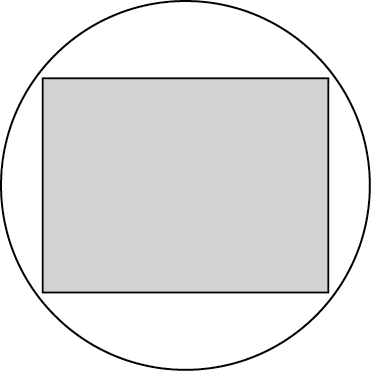
The image seen through the eyepiece is circular, but the camera can only capture a square image. (See the figure at the right.) Ideally, the corners of the square (bounds of the camera image) will just touch the edge of the circle (visual field of view). When choosing the optical strength (magnification) of the microscope adaptor, match the image sensor chip to the adaptor. For example, with a ½” (0.5") image sensor, use a 0.5X adaptor. With a ¼” (0.25") sensor, use a 0.25X adaptor. The size of the sensor should match the magnification of the adaptor as close as possible. By matching the two settings, you capture as much of the image as possible.
Because the eyepiece field of view is a circle, a camera with a 4:3 aspect ratio will capture more of the image than a camera with a 16:9 aspect ratio. If the camera capture area is extends outside of the eyepiece circle of view, the corners will be blackened (vignetted).
The circles show what is seen through the microscope eyepiece. The squares show what can be captured with a camera attached to the microscope.
NOTE: Adaptor magnifications below 0.35X are more expensive. The camera adaptor is designed to fit the microscope and is usually made by the microscope manufacturer. Most camera adaptors do not work with other microscopes of another make. Third party microscope to camera adaptors are available from various companies and are priced accordingly.
The series of images below demonstrate the field of view issues we've been discussing. The images were taken using a COLCAM ½" TV camera on the standard ½" CS-mount.
F200 Objective, Standard CS-Mount F350 Objective, Standard CS-Mount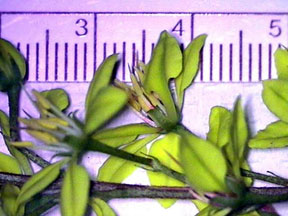
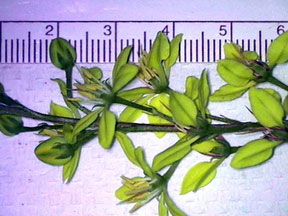
FOV=30mm, Eyepiece view=38mm FOV=50mm, Eyepiece view=66mm
The actual COLCAM video images are captured via a simple video capture card in a personal computer. The Image size is 640x480.
Optical Measuring
General purpose lenses can be used for most optical measuring in a calibrated system with little error. For purists there is type of microscope adaptor called a telecentric lens system. That special optical configuration is designed specifically to match the microscope and camera system and is usually very expensive. The measuring software is integral to the camera capture software (this will be listed as a feature, if it exists). An external optical device called a stage micrometer is required to perform calibration. This is the same item that is required to calibrate an eyepiece reticle. A reticle is a measuring scale etched on an eyepiece for measuring an object in the field of view.
Binocular Adaptors
Binocular adaptors (for example, 503097) are low cost lenses that can be added to the camera and used on a binocular microscope by substituting the camera apparatus for an eyepiece. These lenses are limited by the fact that you now cannot use the microscope without adjusting your optical viewing down to one eye. The WPI version works well, but it does not fit some cameras.
Camera/Microscope Configuration Chart

Close




